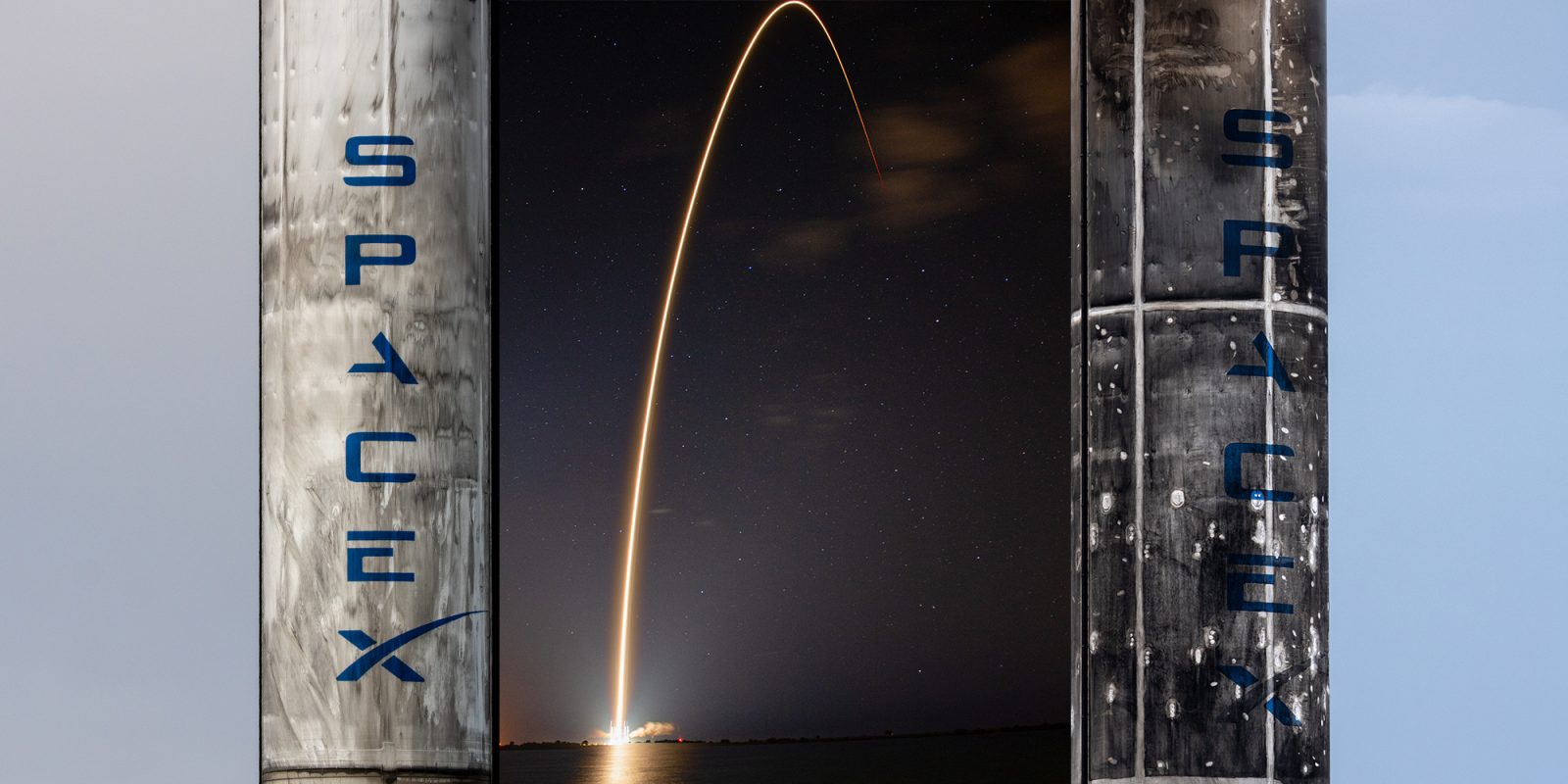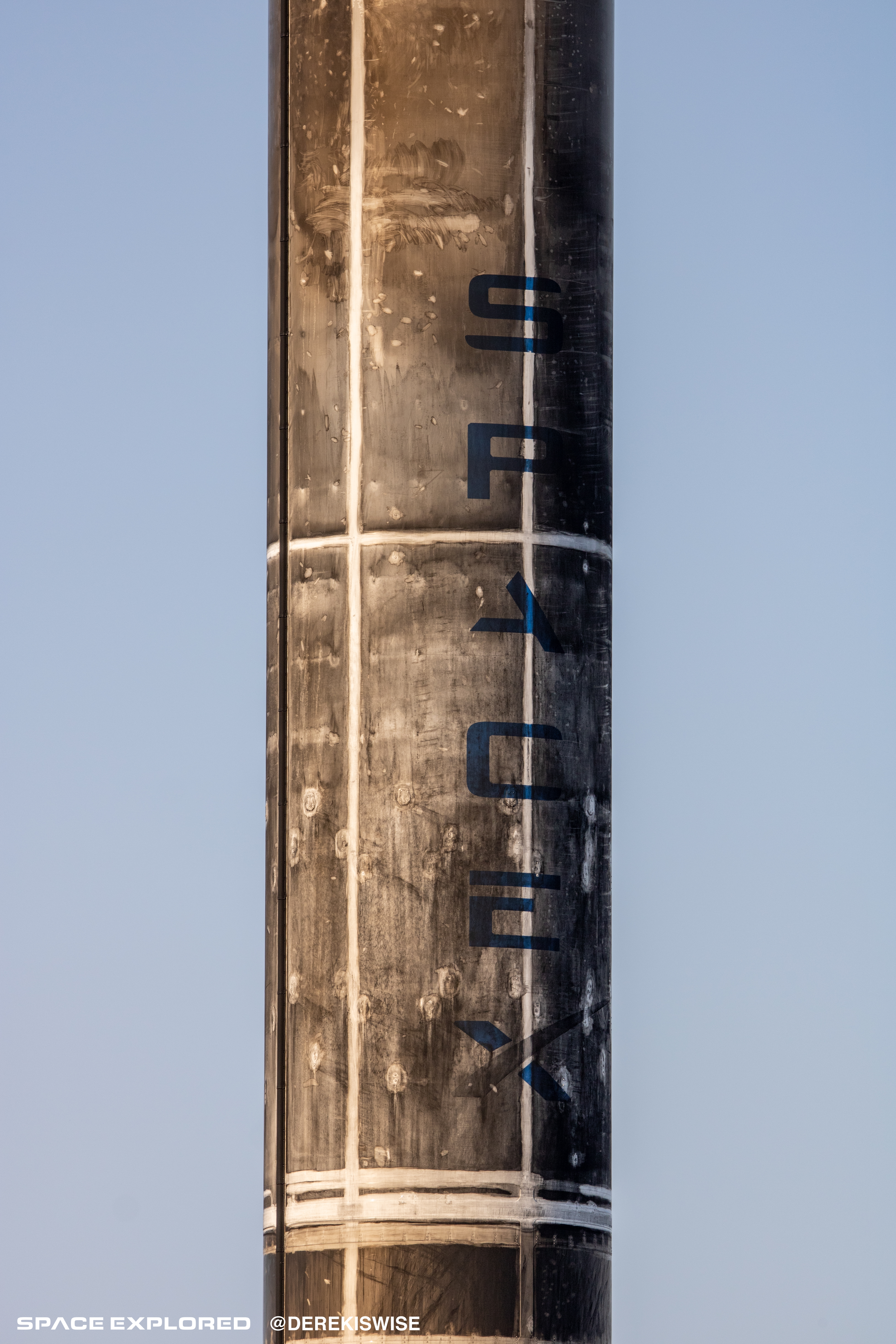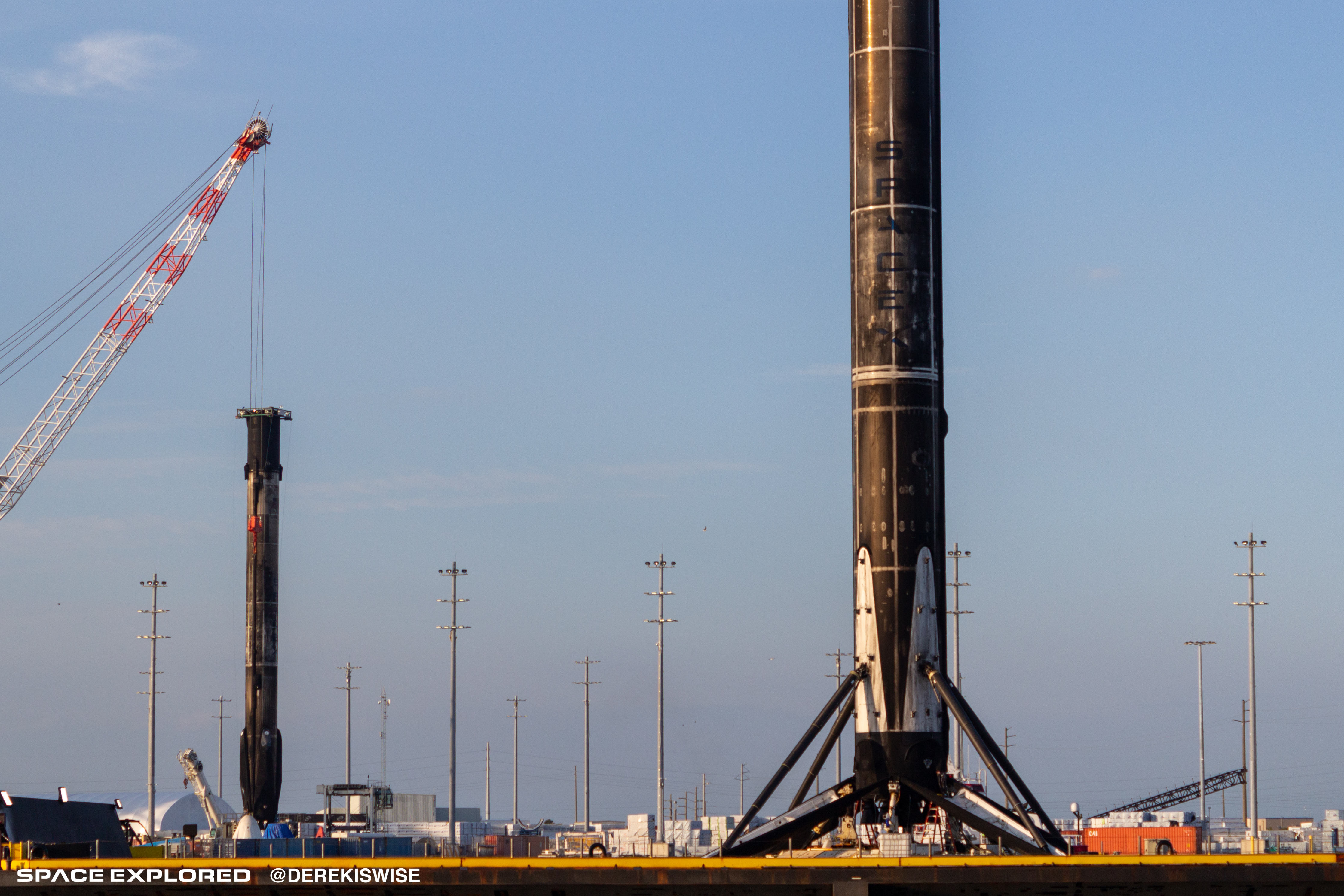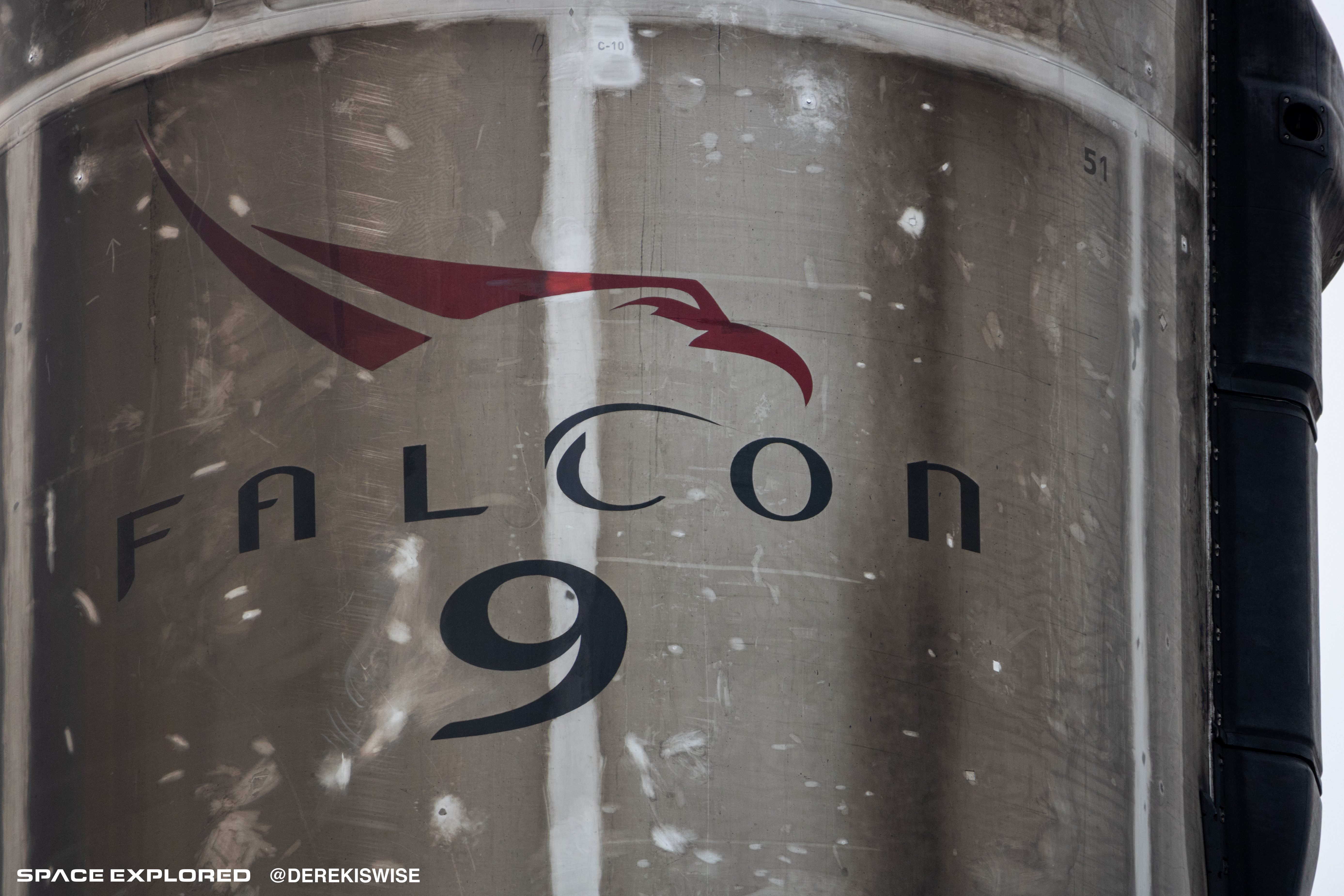
SpaceX has stood out from other rocket companies in their determination to reuse their Falcon 9 boosters as much as possible. Below are some FAQs of booster reuse.
This question is a bit more complicated, so we wrote a whole article on it.
The spots and lines that appear lighter on the boosters after flight are where SpaceX cleans the boosters for inspections between launches. They focus on inspecting the welds, so they clean those areas to ensure the booster is safe and ready for the next flight but they don’t clean the rest of the booster.
During descent, in addition to a large amount of heat generated, a Falcon 9 flies through its own exhaust during the reentry and landing burns. This deposits soot onto the sides of the booster while the legs, in their folded position, create a clean outline where the soot cannot reach.
Simply put, it is extremely costly and delays the re-flight of a booster without providing any tangible benefit. With SpaceX sometimes reusing boosters less than a month after a previous launch, those delays are costly. Likewise, using harsh chemicals or even just directly spraying boosters with water is not ideal. It doesn’t take much to cause issues. In 2020, a small piece of masking lacquer in a Merlin engine caused an engine issue that delayed multiple launches as they investigated the problem, so any risks should be avoided. Besides, just as predicted this dirtier style has truly become a space-fan favorite.
Landing boosters on droneships saves a great deal of fuel and increases the possible payload the booster can carry to orbit. When landing on a drone ship, the booster can continue on its trajectory and land a few hundred kilometers out into the ocean, but for a return to the launch site, the booster needs an additional boost back burn to cancel the horizontal velocity and return back to land. The difference in the maximum payload to orbit is enough that when SpaceX moved to the heavier Dragon 2 capsule they were no longer able to return the booster to the launch site. While Cargo Resupply missions up to CRS-20 could return to LZ-1 at Cape Canaveral, CRS-21 and forward need to land on a droneship in the ocean.
Reusing boosters is expensive and potentially risky. There is an added degree of complexity that comes with the reuse of boosters. SpaceX has an array of chartered vessels to safely return boosters, fairings, and Dragon capsules back to port which all cost money. Reusing boosters also decrease the payload to orbit of a rocket. Any fuel that needs to be used for landing is then not able to be used to accelerate the payloads.
SpaceX also follows a far different design and testing philosophy from companies like ULA. SpaceX will take many risks and fail many times over in order to develop and progress quickly; just look at Starship. ULA, on the other hand, tends to work slower and more conservatively in an attempt to ensure success and at the first launch. Reusing a rocket includes an inherent risk of failure, especially on a first attempt. According to Tory Bruno’s estimate, they would need to fly a booster 10 times in order for it to be financially justified. This is far off from the two flights that SpaceX claims they need, but even so, SpaceX recently achieved their first 10th flight of a booster.
Even with these challenges, more rocket companies are quickly moving towards reuse. ULA has the “SMART reuse” for their upcoming Vulcan rocket and Rocketlab will be implementing booster recovery and reuse for their Electron rocket soon.
Depending on the specific trajectory of the mission, boosters launched from Florida usually arrive in Port Canaveral about 3-4 days after launch. The return can be tracked using apps like MarineTraffic if you pay for Satellite tracking, free tracking is available if they are near the shoreline. An excellent resource for the time of these arrivals is Gavin Cornwell (@SpaceXFleet on Twitter). He tracks the movement of both SpaceX boats and other rocket-related boats and shares his time estimates for arrival. You will often see the Space Explored team sharing his tweets.
When a Falcon 9 booster is coming into port it can be seen for miles along Cocoa Beach. To get the best, up-close view you can enter Jetty Park to see the booster arrive from on the Pier. It costs $15 a day to enter or you can purchase an annual pass. If you don’t want to pay for viewing, Freddie Patrick Boat Ramp is a public boat ramp directly next to Jetty Park. The downside of this area is that you will not be able to see the booster until it turns into the Port.
Once the booster has docked for processing, there is a small grass park that provides an excellent viewing opportunity that sits between Gators Dockside and Rusty’s Seafood. Please park in the parking across the road, the parking on the port side of the road is meant specifically for restaurant patrons.
Falcon 9 Boosters are numbered with a B followed by a four-digit number. The original V1.0 boosters started with B0000, but after the first seven they moved to B1001 and count up sequentially from there. There is a second number that follows the booster number, which is often used to designate the launch number. This is separated by either a period or a hyphen. Internally, SpaceX uses a hyphen to designate this launch number.
The final two digits of the booster number are placed on the boosters. They are visible both near the Falcon 9 logo at the top of the booster and on newer boosters, the logo is also placed between the legs of the booster. Here the “51” can be seen as B1051-10 returned to port.
Simply put, SpaceX doesn’t know. Originally thought to be 10 reuses, the amount of degradation was far less than expected and Elon has speculated that they could reach 100 launches of an individual booster. With more reuse means there will need to be more refurbishment, but SpaceX plans to continue pushing the life-leading boosters to their limits with the growing number of Starlink launches, where only their own payloads are at risk of a launch failure. Currently, booster B1051 is the life-leading booster, having flown 10 launches, starting with Demo-1 in March of 2019 and most recently supporting the Starlink V1.0 L27 mission.
Want to help support Space Explored?
Follow Derek on Twitter or Instagram.
Shop on Amazon or directly support Derek by becoming a member of their Patreon.
Enjoy reading Space Explored?
Help others find us by following on Apple News and Google News. Be sure to check us out on YouTube, Twitter, Facebook, and Instagram, join our Discord!
FTC: We use income earning auto affiliate links. More.





Comments